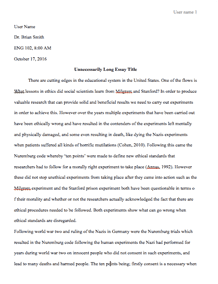

Target Canada was a Canadian subsidiary of Target Corporation which is the second largest retailer in the United States after Walmart. Target is operating in Canadian retail industry that continues to change and evolve foreign retailers such as Walmart increase their presence within the Canadian market. The retail market structure refers to various companies that sell same products in the same geographical area. To survive in such industry, you should offer something different such as discounting some products, and this is something that Target failed to do as it failed to bring something better and consumers did not see any need of shifting from their current retailers. An oligopoly market structure is characterized by a few organization that comes together to either lower or raise prices depending on the demand. Firms in this industry do not enjoy massive profit as they focus on reducing retail competition at the cost of harming society on a national or local scale. Also, in the oligopoly market, it not easy to compete with well-established companies since they do not have established customers. For instance, Target faced a lot of competition from the well-known retailers such as Walmart and Canadian Depo that had won the loyalty of existing customers (Mack,2015). In this kind of market, companies compete using non-prices competition method since they offer same products from similar manufacturers and why should you charge the higher price for the same product that your competitor is offering and thats why Target lost a lot of customer on the same as it priced its product high. This can be shown in the kinked demand curve model which suggests prices will be justly stable and there is little inducement to alter prices.
Diagram 1:Kinked Demand Curve Model
This diagram shows that companies try to maximize profit and if they charge higher, they lose the market share as they will not remain competitive. On the other hand, if they reduce prices, the will expand the market share, but another firm will follow suit and cut costs and hence the demand is inelastic for the price cut. As such, prices are rigid in oligopoly.
Q2. How does Target determine its profit-maximizing (loss-minimizing) output and price?
Every company aims at making the profit regardless of the industry it is operating; however, profit is not enough and firms now has focused on doing more than just making the profit. Target operates at an output where the marginal cost is equal to the marginal revenue. The retailer chooses the best level of the production by trying to compare the additional income which they can obtain by selling an extra unit of output with the additional cost that was incurred in making that unit available on the counter. The moment Target identifies its profit its level of maximizing its output; the firm multiplies the revenue it has gotten by the difference between price and average total cost by the output to get the total profit. Target has implemented just in time inventory system that has enabled the firm to reduce the cost of inputs such as storage since goods are only procured when needed. If Target realizes that it is incurring losses as it was the case in Canada, the firm uses the same rule; MC=MR to help it determine the loss minimization.
Q3. Why did Target continue to operate in the short run?
In Canada, Target continued to operate in the short run since the price at loss minimization level of output was enough to cater for average variable cost such as labor and electricity among another cost. Initially, the company had attracted customers even though it had set a high for some of its commodities as compared to its competitors. The consumers continued to trickle in most of its stores hoping that the price will reduce something that did not come soon and they opted to shift back to other retailers. Furthermore, Target relied on delay tactics as it promised it consumers that it had supply chain issues which it had to fix but failed and this meant that the customers that had started buying its product were discouraged on the same(Mack,2015). However, when the prices at the loss-minimizing level of output became below the average variable cost, the firm had to shut down as a way of minimizing losses. During this period, the fixed cost cannot be all covered in the short run, and if this persisted in the long term, Target could have driven out of business.
Q4. Describe the market after the closing of Target in Canada. Describe what happens to other retail stores in Canada that remain open (e.g. what happens to the demand for items in those stores?).
The other remaining retail stores such as Walmart experienced an increased demand for retail store product. The supply of retail product on the market reduced while the number of consumers remains the same. The moment Target started its operations in Canada, it had attracted some few customers, and these customers had to shift back to their previous retailer. Due to increased demand, the remaining retailers might change prices a little bit higher as they will take advantage of the shortage that Target left behind, as it was a choice for some consumers during that short period of its operation.
Reference
Mack G. (2015) Targets launch into Canada 'a multifaceted failure: Retailer to close 133 stores across Canada after launching in March 2013, Retrieved from http://www.cbc.ca/news/business/target-s-launch-into-canada-a-multifaceted-failure-1.2901789
Request Removal
If you are the original author of this essay and no longer wish to have it published on the customtermpaperwriting.org website, please click below to request its removal:


